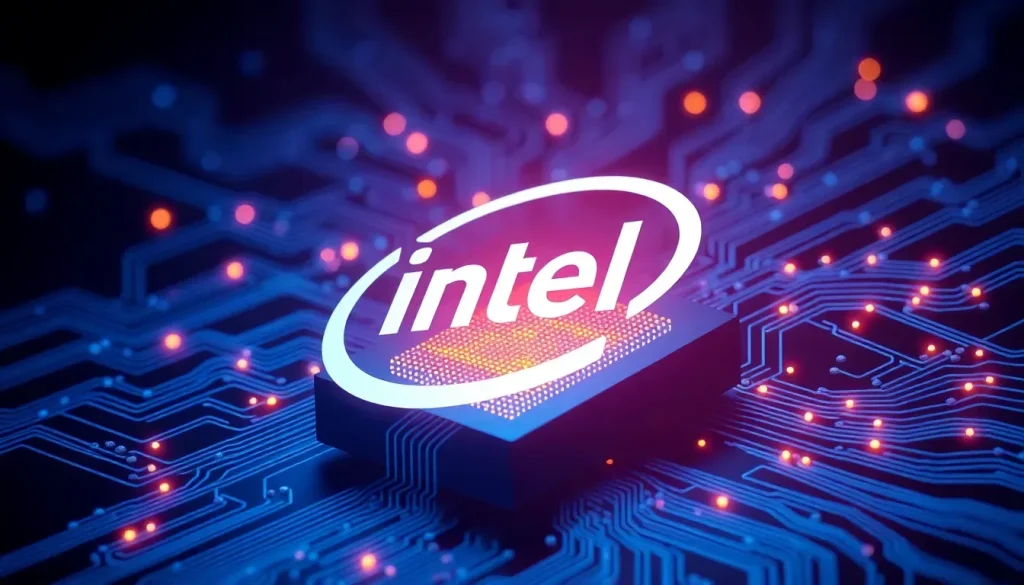Intel prepares to become the leading AI foundry globally

Intel is making significant strides to reposition itself as a leader in the semiconductor industry, particularly in the burgeoning market of artificial intelligence (AI). With its recent announcement of the Intel Foundry, the tech giant is gearing up to meet the diverse needs of customers who require cutting-edge silicon for their innovative projects. This pivotal shift not only highlights Intel's ambition but also reflects the changing landscape of technology where AI plays a critical role.
The transformation of Intel's manufacturing division aims to create an ecosystem that caters to both internal and external clients, emphasizing transparency and competition among its own product design teams. By establishing a foundry dedicated to AI, Intel is positioning itself as a key player in a rapidly evolving market.
Intel Foundry: Open to diverse customers
Intel has a rich history in silicon manufacturing that dates back over five decades. Traditionally, the majority of the chips produced in its fabrication plants were designed for Intel's own products. However, with the establishment of Intel Foundry, this dynamic is set to change.
At the inaugural event called IFS Direct Connect, Intel's CEO, Pat Gelsinger, articulated the company’s vision: “AI is profoundly transforming the world and how we think about technology and the silicon that powers it. This creates an unprecedented opportunity for the world’s most innovative chip designers.”
The surge in demand for AI chips has exposed significant challenges in the global manufacturing network, notably a shortage of leading-edge capacity and advanced packaging capabilities. Intel aims to leverage its expertise to address these bottlenecks and provide reliable solutions for its customers.
- Intel Foundry focuses on meeting the varied needs of customers requiring advanced silicon.
- Internal design teams for products like Xeon and Core will also utilize Intel Foundry services.
- Intel aims to alleviate global manufacturing constraints through its established systems.
Manufacturing AI at scale: The backbone of innovation
The company's latest roadmap emphasizes the imperative of manufacturing AI chips on the most efficient silicon. This strategy, known as “five nodes in four years” (5N4Y), includes the readiness of the Intel 3 process for high-volume production and sets the stage for subsequent technologies like 20A and 18A.
Intel's Craig Orr confirmed that customers can initiate designs now, with complete product designs expected by the second quarter for the 18A process. Notably, the Xeon E-Core Clearwater Forest, featuring up to 288 cores, is already in the works.
Intel envisions the next generation of AI systems to integrate Compute Dies built on the 18A process alongside a Base Die manufactured on the more economical 3 process. This hybrid approach is designed to optimize performance while managing costs effectively.
Ambitious manufacturing roadmap
Intel's roadmap is ambitious and reflects its commitment to pushing technological boundaries. Currently, the Meteor Lake architecture is produced using the Intel 4 process, with many advancements still on the horizon.
The versatility of different silicon types allows Intel to tailor chips for distinct applications. For example:
- Some silicon variations prioritize frequency for speed.
- Others are optimized for stacking capabilities.
- Many benefit from maximum efficiency to reduce power consumption.
Intel has introduced new suffixes in its processes to denote different enhancements, such as:
- E: Feature extensions with minimal performance improvements.
- P: Small performance increments for high-performance products.
- T: Silicon prepared for advanced 3D stacking technology.
The diversity in offerings is designed to capture a broader segment of the market, reflecting Intel's strategic approach to meet varying customer demands.
Intel's aspirations and market positioning
Currently, Intel is optimistic about its prospects as a leading foundry partner in the semiconductor sector. The company has set an ambitious goal to become the second-largest external foundry by 2030, aiming to surpass Samsung while trailing behind TSMC.
An intriguing aspect of this shift is the change in internal dynamics. Intel's product design teams no longer have unlimited access to manufacturing resources; they must now demonstrate the necessity for cutting-edge capacity. This competitive landscape may lead to a scenario where future Intel products, such as Xeon and Core chips, could compete for manufacturing time against external fabless companies that promise higher revenue opportunities.
The potential for collaboration or competition with companies like Nvidia adds a layer of complexity to Intel’s strategy. The landscape could see future Nvidia products manufactured by Intel while its own chips rely on TSMC’s capabilities.
Challenges and opportunities ahead for Intel Foundry
Despite the optimism surrounding Intel Foundry, the company faces several challenges in realizing its ambitious goals. The semiconductor industry is characterized by rapid technological advancements and intense competition, particularly from established players like TSMC and Samsung.
Moreover, Intel must navigate external factors such as:
- Global supply chain disruptions affecting materials and logistics.
- The need for continuous innovation to keep pace with evolving customer demands.
- Establishing strong partnerships to enhance its manufacturing capabilities.
However, the opportunity for growth remains substantial. The increasing reliance on AI technologies across various sectors presents Intel with the chance to capture a significant market share by providing robust and innovative manufacturing solutions. As the demand for AI accelerates, Intel Foundry is poised to play a crucial role in shaping the future of semiconductor manufacturing.
The future trajectory of Intel Foundry
Looking ahead, Intel Foundry’s success will depend on its ability to adapt to market conditions and customer needs. The company’s commitment to transparency within its internal teams and external partnerships will be pivotal in fostering a collaborative environment that drives innovation.
As Intel continues to refine its manufacturing processes and expand its capabilities, it will also need to focus on:
- Enhancing its research and development efforts to stay ahead of competitors.
- Investing in sustainable practices to meet growing environmental concerns.
- Cultivating a skilled workforce equipped to handle advanced manufacturing technologies.
The semiconductor landscape is evolving rapidly, and Intel’s journey toward becoming the world’s leading AI foundry will be closely watched by industry stakeholders. By embracing change and fostering innovation, Intel is not only positioning itself for success but also influencing the future of technology as a whole.




Leave a Reply